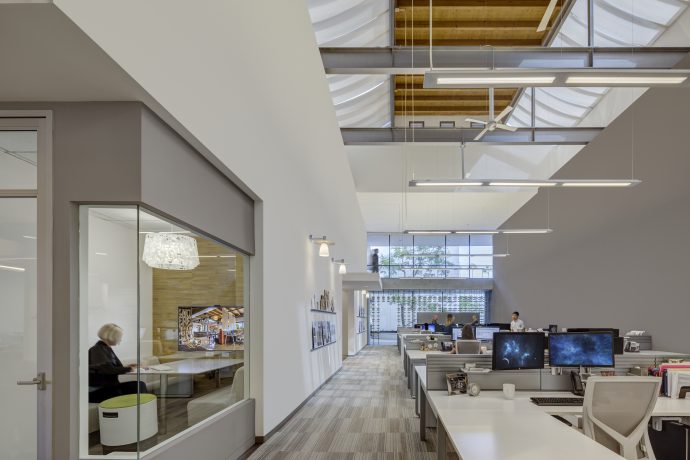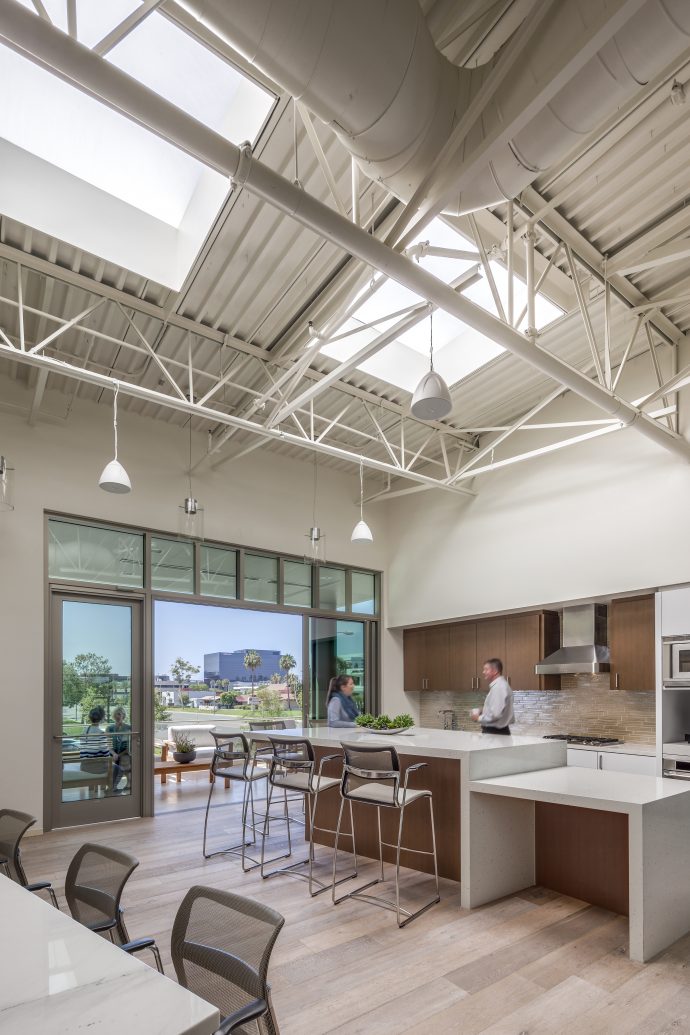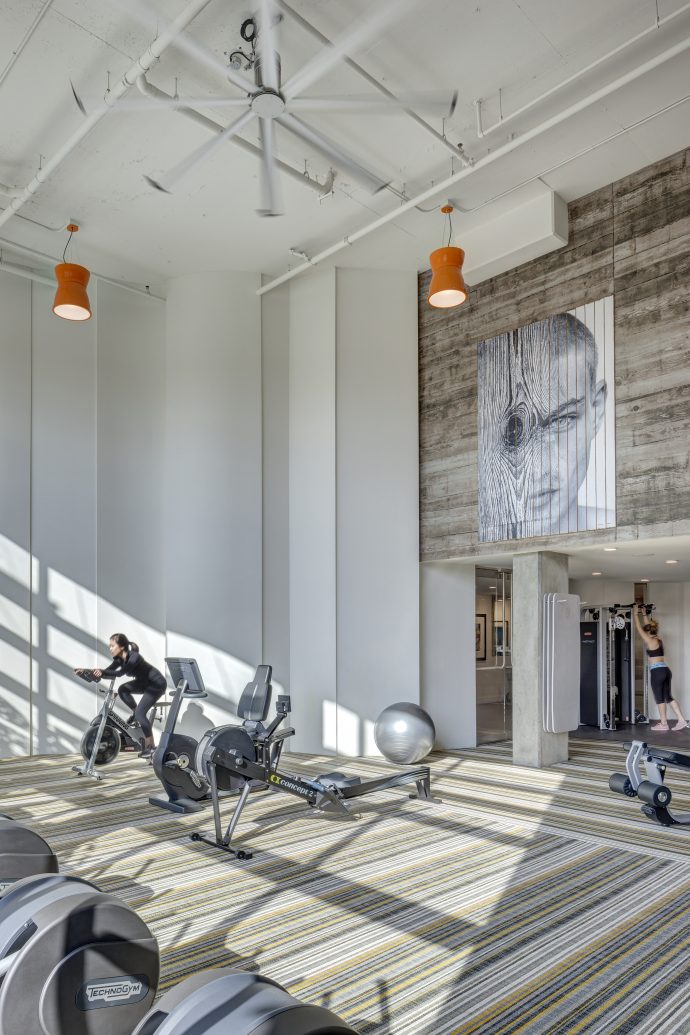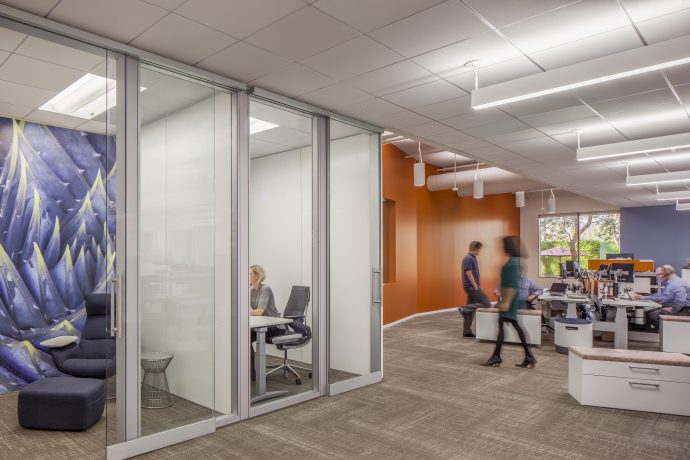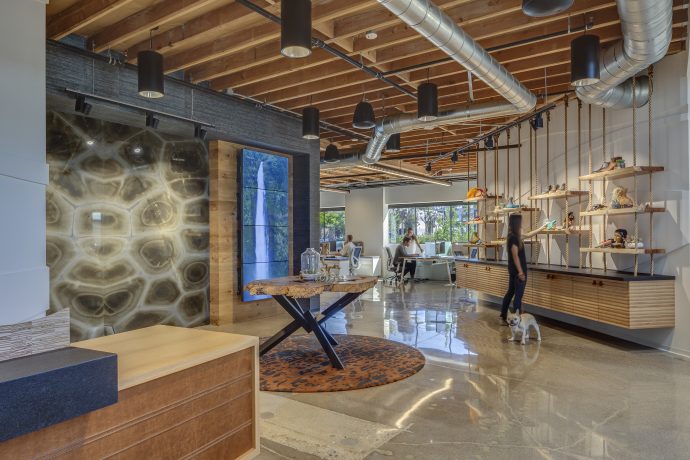Access to more information has allowed more people to take a serious interest in their health. They turn over boxes to read nutrition labels, try to limit unhealthy food intake, and enjoy sneaking in exercise when they can – especially weekend walks. In the workplace, where we spend more than half of our waking hours, sustaining healthy lifestyle habits can be a challenge.
What if instead of enabling unhealthy habits, the workplace could support a healthy lifestyle?
This is where the WELL Building Standard™ and Fitwel® (Facility Innovations Toward Wellness Environment Leadership) take center stage. By integrating human health into building design, the workplace helps its occupants reach their potential.
Companies that have initiated wellness programs are seeing positive returns. Harvard researchers report that for every dollar spent on employee wellness, medical costs fall $3.27 and absenteeism drops $2.73, a 6:1 return on investment.
Are you protecting your biggest asset?
Employers allocate more than 90 percent of their annual operating costs to their people. So it’s not surprising that business leaders like Google, Facebook, and Apple are investing in the health and wellness of their employees. In addition to reducing sick days and healthcare costs, wellness initiatives increase employee productivity, creativity, and workplace satisfaction.
In fact, a 2013 study found that 87 percent of the 10,000 employees surveyed considered health-and-wellness benefits a significant factor when choosing an employer. Yet at that time, only 36 percent of the 1,300 employers surveyed felt they had the information necessary to implement an employee health-and-wellness strategy.
Meanwhile, employers continue to close the information gap. According to SHRM research, implementation of general wellness programs has increased from 58 percent of U.S. employers in 2008 to 70 percent of U.S. employers in 2015.
Seven common-sense wellness strategies that boost health and well-being:
1) Clean the Air
Airborne pollutants can be 2 to 5 times higher indoors than outdoors. After cleaning the indoor air, many employers see workplace productivity improve by eight to 11 percent. Even more impressive is a 2015 double-blind study from the Harvard School of Public Health showing that people working in well-ventilated offices with low levels of pollutants have double the cognitive function of those in offices with average levels of exactly the same pollutants.
In the U.S., poor air quality results in an estimated $150 billion of illness-related costs. Of that, $93 billion represents lost productivity from headaches, fatigue, and irritation associated with sick building syndrome.
2) Ensure Adequate Hydration
Our bodies are two-thirds water, and all cellular functions depend on proper hydration. Water intake boosts performance, while dehydration as mild as two percent can impair mental functions, including memory.[10] An estimated 80 percent of the U.S. adult population is at least mildly dehydrated during a normal day.
3) Promote Healthy Eating
Unhealthful eating increases the risk of low productivity by 66 percent. Most of us consider ourselves educated consumers, but we have an amazing lack of knowledge about basic nutrition. Our sugar intake is shocking, and diabetes is running rampant, even though it’s one of the top four preventable causes of premature death.
Adults with the greatest knowledge of nutrition are 25 percent more likely to eat a healthy diet, and those who increase their intake of fruit and vegetables are 27 percent less prone to depression. The WELL and Fitwel standards call for educating employees about nutrition, providing affordable food choices, and identifying behavioral cues.
4) Provide Adequate Natural Light
Natural light regulates the body’s hormones. Natural light changes in wavelength and intensity from dawn to dusk, informing the body’s circadian system to activate hormones for functions such as sleep, awakening, synthesizing vitamin D, and digestion. Indoor light, however, is a major disruptor.
Most lamps used in workplaces today are static—one color and one brightness. Employees working near sunlit windows have a 15 percent higher production rate than those working under artificial light. However, not every employee can have a sun-filled view.
When exposure to natural outdoor light is limited, the high-end solution is circadian lighting that mimics the slow daily transition from cortisol-producing blue in the morning to melatonin-producing red in the afternoon. Today’s smartphones and computers have circadian apps to improve sleep.
5) Encourage Physical Activity
Physical inactivity is now the fourth-leading risk factor for death. Without physical exercise, people lose strength, stamina, flexibility, and cardiovascular function. Many experience depression, stress, and weight gain. Those who rarely exercise have a 50 percent increased risk of low productivity.
Fitness is a relatively low-cost category with high rewards. Wellness strategies focus on education, physical activity in the workplace, interior and exterior activities, and ongoing support. Fitwel strategies also include optimizing walkability to nearby amenities as well as biking and walking nature trails. The payoffs include increased productivity, reduced absenteeism, less turnover, fewer accidents and insurance claims, and lower costs related to retirement.
Three major impairments to comfort are temperature fluctuations, poor ergonomics, and noise. The ideal office temperature is 70.88°F, and for every 1.8°F above or below that number, performance decreases one to two percent. A further performance reduction occurs when workstation furniture is not adjusted to the user. And distracting noise, such as a ringing telephone on an empty desk, can drop employee performance by a whopping 66 percent.
7) Reduce Employee Stress
To relieve excess stress in the workplace, look outside. An important component of wellness is biophilic design (biophilia is a new field that recognizes the human need to connect with nature). Just a 40-second break to see the green of nature—either outdoors or on an indoor living wall—increases one’s ability to concentrate by six percent. Biophilia can reduce stress, enhance creativity, and even expedite healing.
Every strategy listed above combats stress. Clean air alleviates headaches and fatigue, proper hydration clears the mind, healthful eating reduces depression, adequate natural light enables restful sleep, exercise improves overall health, and workspace comfort produces feelings of well-being.
An investment in employee health and wellness provides ongoing returns.
Businesses that support their employees’ health and well-being through the WELL Building Standard and Fitwel are rewarded by staff loyalty, improved performance, and increased profit.
To earn WELL certification, a space must pass performance testing in several categories, much like ensuring the nutrition label is accurate. Like nutrition labeling, WELL testing has an expiration date and requires recertification every three years.
Fitwel strategies are supported by over 3,000 research studies approved by the CDC and GSA. The strategies were developed by experts in public health, facility management, and design. Fitwel certification does not expire.
ABOUT US
At InteriorLOGIC, we build work environments. From our home office in Madison, WI our award-winning commercial interior design team focuses on creating spaces that work. We continually work to improve the end user experience with each design and our team is well-suited for challenging projects including LEED certification and sustainability projects. For more information about our business and approach, please visit www.intlogic.com.


